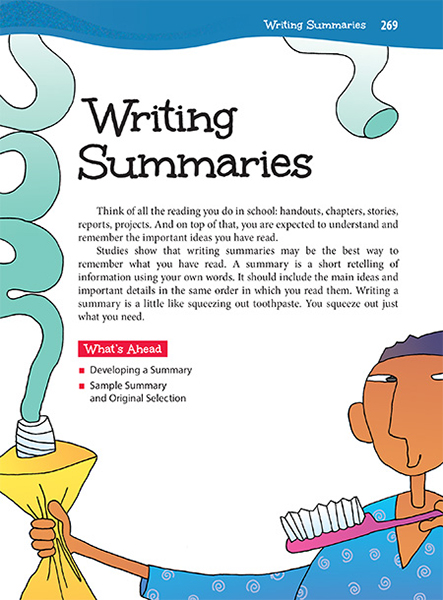Page 269 from

Start-Up Activity
To introduce your students to summarizing, try a “sentence summary.” Present the following long sentence (65 words) to your class:
After the long day’s drive to Yellowstone Park, the girls helped their dad unpack the tent and camp stove, the rolls of sleeping bags, the duffel bags of clothes, the boxes of food, and the containers of water, but as they hoisted the canoe off the car roof, Mom suddenly called out that something was missing—the canvas bag containing the tent poles and stakes.
Then ask students to summarize this sentence, reducing the number of words by about half (to 32). Then ask them to pare the sentence down again to about half that number (to 16).
Think About It
“Writing a summary is a little like squeezing out toothpaste. You squeeze out just what you need and leave the rest in the tube.”

Start-Up Activity
To introduce your students to summarizing, try a “sentence summary.” Present the following long sentence (65 words) to your class:
After the long day’s drive to Yellowstone Park, the girls helped their dad unpack the tent and camp stove, the rolls of sleeping bags, the duffel bags of clothes, the boxes of food, and the containers of water, but as they hoisted the canoe off the car roof, Mom suddenly called out that something was missing—the canvas bag containing the tent poles and stakes.
Then ask students to summarize this sentence, reducing the number of words by about half (to 32). Then ask them to pare the sentence down again to about half that number (to 16).
Think About It
“Writing a summary is a little like squeezing out toothpaste. You squeeze out just what you need and leave the rest in the tube.”

